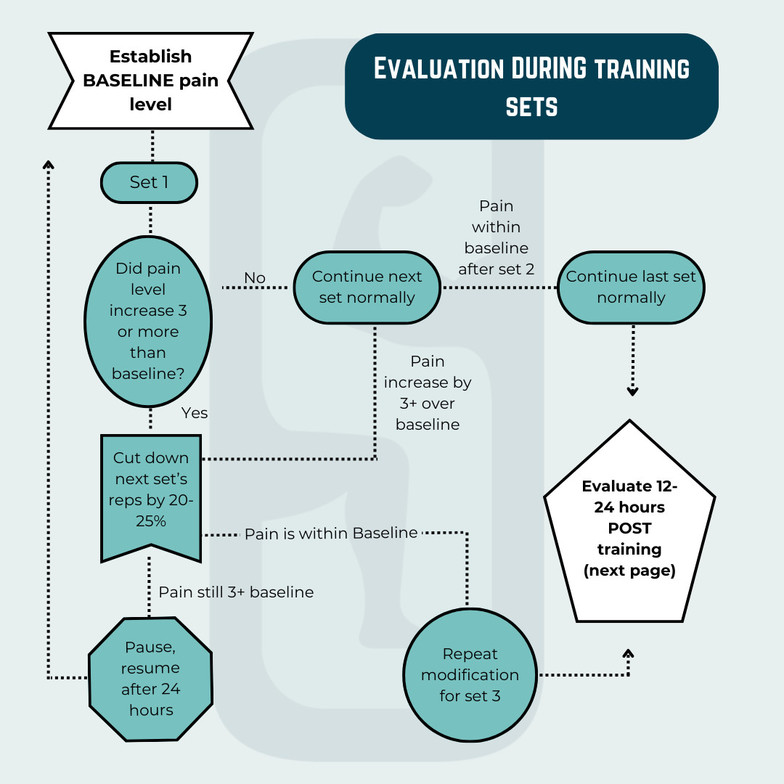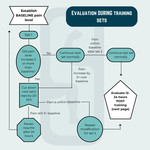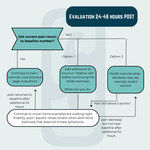



When it comes to rehab exercises, knowing when to push through discomfort and when to back off can be challenging. It’s a common concern, and rightfully so—pain can be intimidating, especially when you're working to recover from an injury. While pain is a natural part of the healing process, it's important to understand that it’s not always a direct indicator of tissue damage. In fact, pain can often be misleading.
This guide is designed to help you navigate those moments of uncertainty and empower you to make informed decisions during your rehab journey. However, it’s crucial to remember that these guidelines are just that—guidelines. Always reach out to me or consult with your healthcare provider if you’re unsure about how to proceed.
Understanding Pain: Not Always a Reliable Indicator
Before we dive into the specifics, it's essential to grasp one key concept: pain does not always equal harm. The experience of pain is influenced by various factors, including your mental state, past experiences, and even your environment. This means that pain isn’t always a direct reflection of the severity of your injury.
So, how do you determine when to push through the pain and when to stop? Let’s explore three key ways to evaluate your pain and guide your rehab progress:
1. Evaluating Pain DURING Exercise
The first step in managing pain during your rehab exercises is to establish a baseline for your pain and symptoms before you begin. This baseline will serve as your reference point throughout your workout.
Here’s how to proceed:
- Complete the 1st set of your prescribed exercise with the assigned number of repetitions. If you experience a slight increase in pain during the exercise, that’s okay—this is expected. The key is to assess how your pain behaves after completing the set.
- Evaluate your pain level after the 1st set: Did the pain stay roughly around your baseline? If yes, you can proceed to the 2nd set as normal. If the pain has slightly increased beyond your baseline, consider decreasing the repetitions in the 2nd set by 20-25%. For example, if you were prescribed 15 reps, reduce this to 11-12 reps.
- Monitor your fatigue: It’s normal to feel more fatigued during this process, so don’t be alarmed if you’re feeling more tired than usual. If the pain returns to your baseline after the modified set, you can continue to the 3rd set with the adjusted reps.
- Reassess if pain significantly worsens: If your pain level increases by 3 or more points from your baseline (e.g., from a 4/10 to a 7-8/10), it’s time to stop. Reevaluate your condition over the next 24-48 hours before continuing with your exercises
- Pain should ideally return to baseline: After 24-48 hours, your pain levels should decrease back to your baseline or better. If your pain is still elevated by 3 or more points (e.g., baseline was 4/10, and it’s still at 7-8/10), you need to take an additional 24 hours of relative rest.
- Engage in light activities during rest: This can include walking, aquatic exercises, or alternative movements that don’t aggravate your symptoms. For example, if you’re dealing with a shoulder issue, focus on lower body exercises instead.
- If pain returns to baseline: Once your pain levels have returned to baseline or better, you can resume your prescribed rehab exercises and continue using the same evaluation process as before.
- Consistency of Pain: Is the current pain the same as your original pain, or has it changed in intensity, location, or quality?
- Why it matters: A change in the nature of your pain can indicate whether you're aggravating the original issue or if a new problem is developing. Consistent or improving pain is generally a good sign, while new or worsening pain may require reassessment.
- Tolerability of Pain: Is the pain tolerable, or does it significantly disrupt your activities?
- Why it matters: Pain that is manageable and doesn't significantly interfere with your daily activities is often considered acceptable during rehab. However, if the pain becomes intolerable, it may be a sign that you need to scale back or modify your exercises.
- Impact on Daily Function: Does the pain interfere with your ability to perform daily tasks, such as walking, sitting, or sleeping?
- Why it matters: Pain that significantly affects your daily life could indicate that you're pushing too hard in your rehab program. It’s important to adjust your routine to ensure that your recovery doesn’t hinder your overall quality of life.
- Progression of Pain: Is the pain gradually worsening day by day, or is it staying the same or improving?
- Why it matters: Worsening pain over time is a red flag that your current rehab approach may be too aggressive or inappropriate. If you notice this trend, it’s crucial to stop and reassess your plan with your healthcare provider.
- Onset of Pain: Is the pain taking longer to appear? For instance, if you previously experienced pain during the 2nd set but now can complete all 3 sets before noticing it, this indicates progress.
- Why it matters: Delayed onset of pain suggests that your body is adapting and becoming more resilient, allowing you to handle more activity before discomfort sets in.
- Dissipation of Pain: Is the pain subsiding more quickly? If your pain used to linger for 24 hours after activity but now dissipates within an hour, you’re on the right track.
- Why it matters: Faster recovery from pain is a positive sign that your tissues are healing and that your body is better able to manage and recover from exertion.
- Functional Improvement: Are you able to perform movements that were previously difficult or impossible? For example, if you couldn’t deadlift off the floor before but can now bend over comfortably, that’s a sign of improvement.
- Strength Gains: Are you gradually increasing your reps, sets, or the amount of weight you can handle compared to previous weeks? This is a positive indicator that your body is adapting and getting stronger.
- Goal Achievement: Setting and achieving SMART (Specific, Measurable, Achievable, Relevant, Time-bound) goals can help you track your progress throughout your rehab plan. Regularly assess whether you’re moving closer to these milestones.





